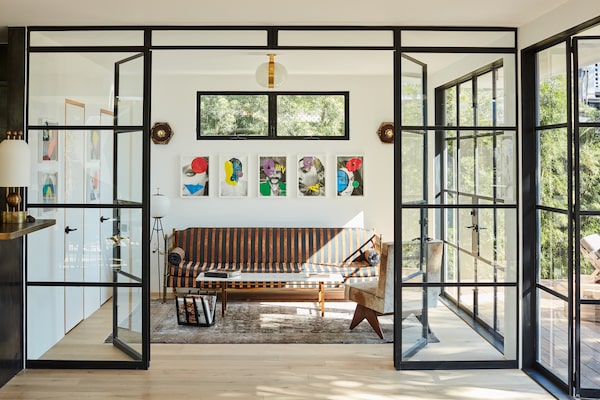
L.A.-based interior designer Brigette Romanek recommends combining high-end and low-end pieces.Michael Clifford/Supplied
Self-taught interior designer Brigette Romanek believes every home has a story to tell.
Her job is to draw that narrative out, which she does by sitting in a space and feeling its energy, by finding out what makes her clients happiest, and by learning what pieces they can’t part with. Then, once she has gathered that intel, she usually goes for a nice, long walk.
“It’s hard for me to turn off,” explains the former singer, luxury handbag designer and now, one of the most sought-after interior designers in the world. “Walking, for me, is relaxation, exercise and it’s my fuel. It’s when I get things done,” explains Romanek, on the phone from New York recently where she was doing interviews to promote her new book called Livable Luxe.
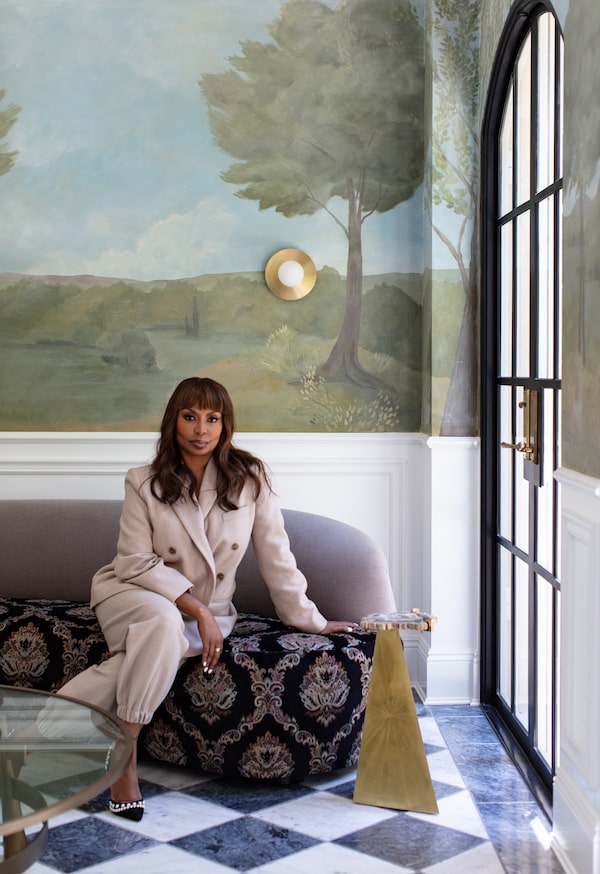
L.A.-based interior designer Brigette Romanek.Michael Clifford/Supplied
In the six years since she started her studio, Romanek Design, Romanek has clocked a lot of steps. Life and work have been busy. She has designed homes for Gwyneth Paltrow (a close friend), Demi Moore, Joe Jonas and Beyoncé (Romanek’s husband Mark is a Grammy-winning director who made the Sandcastles video for the album Lemonade). For the past five consecutive years, her Los Angeles-based firm has also made it into Architectural Digest’s “AD 100,” the magazine’s picks of the top 100 designers in the world.
Livable Luxe is full of photographs of her projects: clients’ homes, the Piaget store on Rodeo Drive, a ski chalet in Europe and her own former home – a storied Spanish revival mansion once used as a recording studio by the Red Hot Chili Peppers, Guns N’ Roses, Jimi Hendrix and, legend has it, the Beatles. Equally interesting, however, are the personal stories Romanek shares about her upbringing as the younger daughter of singer/songwriter Paulette McWilliams, who performed alongside Marvin Gaye, Aretha Franklin, Bette Midler, Michael Jackson, David Bowie and many others.
Romanek, who grew up on the South Side of Chicago, credits her mom and her maternal grandmother for shaping her design ethos. Her grandmother, who worked at the R.R. Donnelley printing factory, would come home at midnight, six nights a week, and throw magazines and catalogues on the kitchen table.
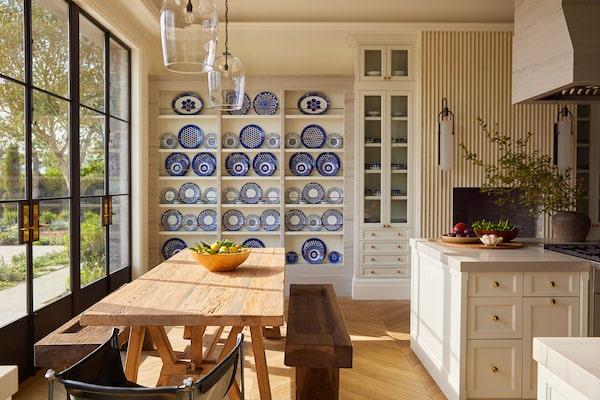
A room from Gwyneth Paltrow's house, a close friend of Romanek.Yoshihiro Makino/Supplied
Romanek spent hours turning the pages, getting a view into different worlds. Then there was her single mom, her role model and best friend. “My mom radiated such infectious energy and style. She had a carefree, rebel spirit about her. She believed in living life to the fullest and making your own rules. We had apartments where she had friends paint murals on our living room walls, or she’d paint a room purple if she felt like it, then paint it green the next day!”
Her mother’s career meant they moved around a lot. A shy girl, Romanek says she was always the “new kid.” She coped with the peripatetic lifestyle by making her bedroom, in each new place, feel like a “home” by filling it with mementos that brought her joy and made her feel safe, including the 72 stuffed animals she took everywhere. “I think that’s why I talk so much about the ‘feel’ of a space or the ‘soul’ of a room. I learned early on to create places that made me feel peaceful and serene – places where I could just be me, to exhale, to laugh, cry or read. That’s now what I try to do for my clients.”
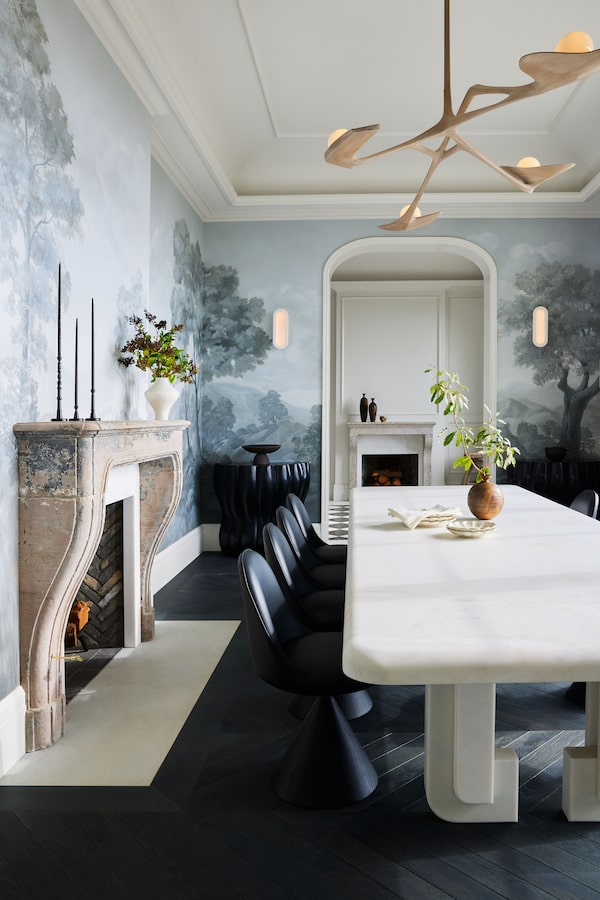
Paltrow wrote in the foreword of Romanek's book that: 'It’s like she can feel what the room is calling out to be and then will manifest it.'Yoshihiro Makino/Supplied
Interior design is in her blood. However, it took a while to find her calling. First, Romanek followed in her mother’s footsteps and tried her hand at singing. She got a record deal but exited the music industry. Then she ventured into designing chic clutch bags that were sold at Barneys and Harvey Nichols. After she and her family moved back to L.A. from England, Romanek gutted and redesigned a couple of their own homes in Hancock Park and Laurel Canyon. Friends loved what she did and asked if she’d help with their homes. One insisted on paying her. Soon after, Romanek Design was born.
“I’ve never formally studied design, but I’ve had the school of life,” says Romanek. “My upbringing taught me to appreciate beauty wherever I found it.” As a result, her design aesthetic is elegant but also exuberant. She effortlessly mixes high-end pieces with flea market finds. This duality – which she has called “Gap meets Gucci” – has become one of her trademarks. “Everything has value, as long as it has its own story. Something can be worth $5 or $5,000 – its value lies in what it means to you. I have one client who could not part with an old sewing machine that was her great-grandmother’s. We painted it black, and it became a statement piece, like a work of art.”
The value, then, of that old sewing machine? Priceless, she says.
Romanek believes her aesthetic has caught on because the homes she creates are eclectic, playful, classic and joyful.Michael Clifford/Supplied
She believes her aesthetic has caught on because the homes she creates are eclectic, playful, classic and joyful. “I approach every client and every job as if it’s the first one I’ve ever done,” she says. “I bring that energy to it because I never want to feel like I’ve done it a million times before. I never want anything to feel fake. I don’t want a stamped look. So, I pay attention to what my clients share with me, their likes, dislikes, their hopes and dreams. I focus on details. I even look at what my clients are wearing.”
Judging by what Paltrow wrote in the foreword of her book, Romanek’s clients are often thrilled with the results. “It’s like she can feel what the room is calling out to be and then will manifest it,” says the actor, who met Romanek when both women were living in London. “She will spend hours finding just the right light, the exquisite chair you never would have thought of. In the three projects we have now done together, she pushed my design boundaries and excited me with a new way of seeing things.”
As for Romanek’s own homes, well, they are in constant flux. “My need to experiment can make my family a bit crazy,” she says. For instance, she got a text from her husband once that read: “Hey, can you tell me where the sofa will be when I get home?” That pretty much sums up Romanek’s approach to design and to life. “Your personal space is a love letter to yourself. You can do what you want to do. You can break the rules.”
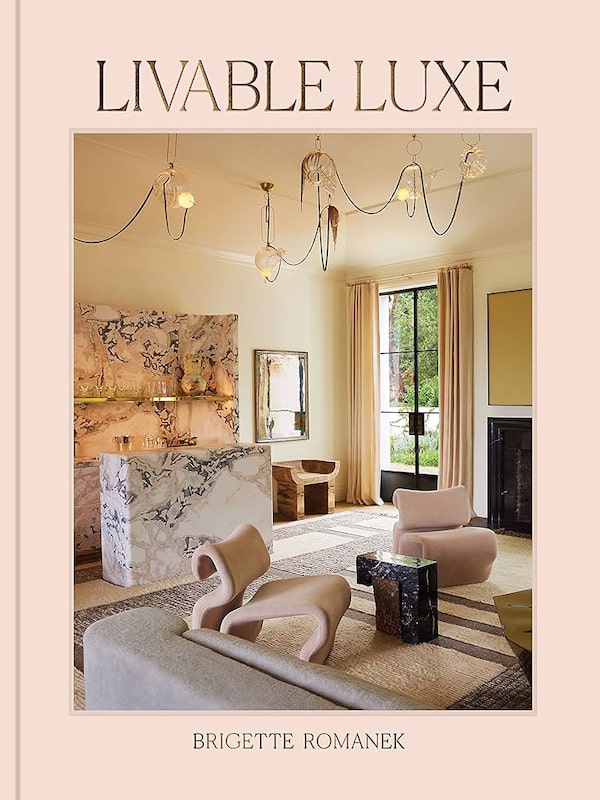
Supplied
Design Advice: How to fill a home with fewer rules and more joy
The first thing you should do when you walk into a room is feel it out. Also consider how you want that room to function. Is it going to be a space to unwind and relax, or is it going to be a room to entertain? From there, Romanek creates a list of the objects she (or the homeowner) loves, and she prioritizes what the “stars” of the room will be. Usually, they’re two or three pieces that complement each other but don’t necessarily match. “I play with these and move them around. And I do it again and again, until it feels right,” she says.
Be intentional about colour. Don’t be afraid to make bold colour choices but take the time to make sure you have carefully chosen the shade that works best with the available light. Throw some really huge samples on the wall, pick two or three that are your favourite. “And don’t just slop on one coat,” says Romanek. “Do it properly. You’re going to want to see how it’s going to really look in the morning when you wake up and at night when it’s dark. Then make your choice.”
Play up the powder room. “Powder rooms should be about expecting … the unexpected,” Romanek writes in her book. She calls these rooms “fun, little jewel boxes,” to showcase your personality. “For me they are places to create something different from everything else. To create ‘wow’ moments that leave lasting impressions.”
If you have design rules you follow – break them. Your goal should be to please yourself and make yourself happy – no one else. “When we were moving into our Laurel Canyon home, the architects kept telling me the rules and what had to happen. I would say, ‘Oh, will I get in trouble if I try something else?’ Alarms aren’t going to go off if you explore other options and experiment a bit.”
Don’t be afraid to mix high- and low-end pieces. “My living room coffee table is filled with blue-and-white ceramic vases that I’ve collected over the years, many from flea markets,” she says. “I even have extras that I keep in a cupboard in the kitchen in case one gets broken. Everything has value, as long as there is a story behind it.”
And most important, have fun. “The best advice I was ever given was from a friend of mine just before I was about to go on stage at Billboard Live on Sunset Strip back in the nineties. … I was nervous. My friend, Kevin Coffin, turned to me and said, ‘Remember to have fun.’ I don’t know why but it made me relax. It made me more present. I think of that life lesson every single day.”